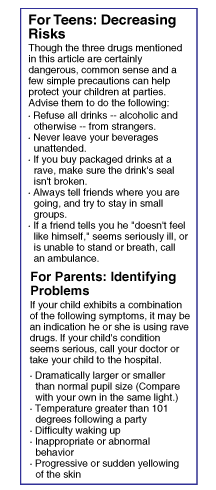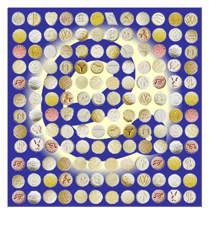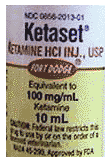Designer Rave Drugs: The New Alphabet
It was 2 a.m. on a Friday night when paramedics rushed a 16-year-old into our emergency room. "He was found unconscious at a rave -- we don't know what he's had," yelled one of the paramedics as he rushed the gurney into our resuscitation unit. The boy was not responding to pain or protecting his airway -- he was in a coma. A breathing tube was quickly placed in his windpipe, and he was hooked up to a ventilator. Samples of his urine and blood were rushed off to the lab. When X-rays, an electrocardiogram, and a CT scan of his head all came back normal, we waited for his blood work and toxicology reports. We couldn't call the boy's parents because we didn't even know his name. Unfortunately, since the dawn of all-night dance parties known as raves, his case is not as unusual as we might hope.

By the time the sun came up, the rave was over, but the boy was still in a deep coma. One of his friends came to the hospital later and told us the boy had ingested "G," a street name for gamma-hydroxybutyric acid (GHB), a drug that is becoming more and more common at raves. Relaxation or sedation is the desired effect, in tune with the teen rave culture that combines a 1960s esprit with trance-style dance music. In some circumstances, however, use of these new designer "rave drugs" can result in coma and even death.
The first raves began in Britain in the late 1980s and tripped across the Atlantic in the early 1990s, bringing with them the drug 3,4-methylenedioxymethamphetamine (MDMA), better known as ecstasy or simply as "E." Since then, several other drugs have emerged as players, including "G" and ketamine, known as "K." Parents of teenagers would be wise to learn this new alphabet of drugs, as well as their effects and health risks.
Ecstasy

Known on the street as "E," "X," "XTC," and "Adam," ecstasy is probably the most publicized of the rave drugs. It was first synthesized in Germany in 1914 and was used as an appetite suppressant. Taken in pill form, it causes a massive release of serotonin, the brain chemical acted on by antidepressants such as Prozac. This vast flood of serotonin triggers a rush of increased emotional awareness along with heightened feelings of empathy, intimacy, and tranquility. Less enjoyable short-term effects may include nausea, vomiting, dry mouth, grinding teeth, clenching jaws, muscle aches, imbalance, and decreased appetite. Long-term effects may include memory impairment, confusion, and major depression. Unfortunately, unlike alcohol use, increased use of ecstasy does not necessarily correlate with more side effects. Instead, toxic effects can occur unpredictably in all users, including weekend users and even first-timers. Often beginning with high fevers, toxic effects can include acute kidney failure, liver failure, loss of the blood's ability to clot, and death.
Ketamine

Known on the street as "K," "Special K," "Vitamin K," "cat valium," and "super acid," ketamine is still utilized in both veterinary and human medicine as an anesthetic. First synthesized in 1962, its medical use has slowly been curtailed due to common occurrences of vivid and often disturbing hallucinations upon awakening. While it is not clear exactly when ketamine became a recreational drug, it is now often purchased illegally from veterinarians, or in Mexico, where it is only loosely controlled. Users either inject ketamine, or dehydrate and inhale it, and they report that it causes an out-of-body-like experience that ranges from exhilaration to horror. Not surprisingly, in large doses, the drug causes general anesthesia, unresponsiveness, and respiratory problems. Normally, however, overdoses of ketamine do not cause death, but rather prolonged sedation.
Gamma-hydroxybutyric acid

Known on the street as "G," "liquid ecstasy," "blue nitro," "grievous bodily harm," and "Georgia home boy," gamma-hydroxybutyric acid is a substance that occurs naturally in the body. First synthesized in 1960, it has had many different medical roles. Due to undesirable side effects, however, it is currently banned in the United States (with the exception of some experimental medical trials). As of May 2000, it will be illegal to possess it without a license. In liquid form, it is both colorless and odorless. When taken in small quantities, it is said to induce feelings of euphoria and relaxation. But unlike ketamine, gamma-hydroxybutyric acid has an extremely narrow safety margin; within 15 minutes of ingestion, 1 teaspoon can induce aggressive behavior, nausea, dizziness, respiratory problems, seizures, coma, and death.
Related link:
Clubdrugs.org, a service of the National Institute on Drug Abuse

